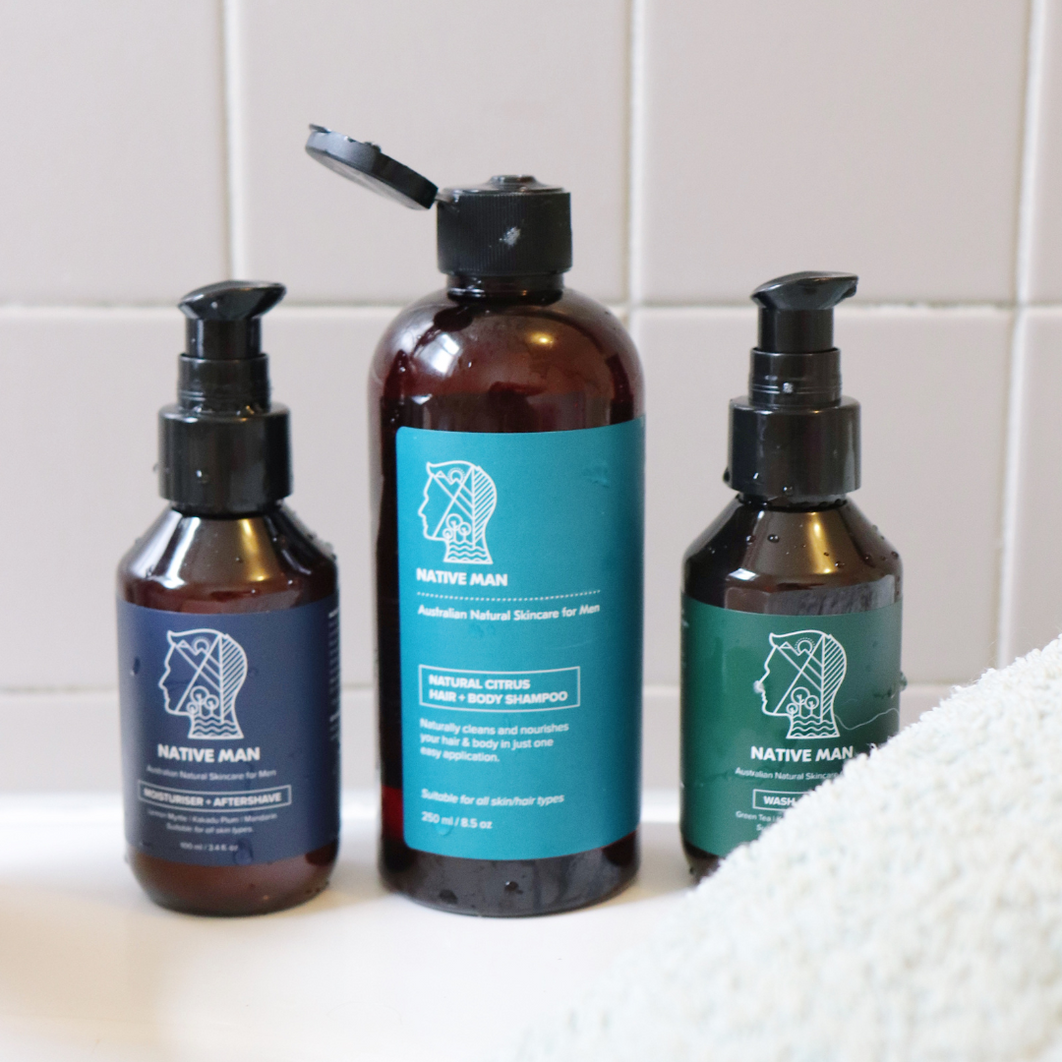Lime Essential Oil is known for its energising, uplifting, and fresh aroma.
While it may be overshadowed by its better known cousin, lemon, lime offers several similar therapeutic benefits and a great alternative or addition to lemon because of its sweet-yet-tart, fresh scent.
The lime tree is well known throughout mythologies as a sacred tree1 and is also well known for its ability to purify, cleanse, and renew the spirit and mind and there are so many other wonderful uses and benefits to add this citrus scent to your collection.
About Lime Essential Oil
The origin of the lime fruit is believed to be Northern India and other parts of Southeast Asia2. Over the centuries, early explorers introduced limes to several parts of the world, including Europe and the Americas. It is believed that early explorers drank the juice of lime to prevent outbreaks of scurvy2.
Today, the cultivation of lime trees has expanded worldwide, including here in Australia. At Zea, we organically source Lime Essential Oil from regional South Australia. It is cold pressed from the fruit of the green limes and has a yellowish to green colour, with a sharp fresh citrus type aroma.
Lime is known for boosting positivity, uplifting the spirit and bringing abundance and optimism into the environment. In the book The Blossoming Heart, Robbi Zeck describes Lime Essential Oil as follows:
“When you are feeling agitated, in great turmoil or dealing with stressful situations, Lime clears any heated emotions and returns you to a place of calm and ease. The tangy, bright fragrance of Lime settles, calms and refreshes the emotions, allowing feelings to be explored and released constructively.3”
Zesty essential oils, like Lime, may help to lift your spirits, particularly during times of mental fatigue4. It will help clear your head and aid decision making.
It is also great for diffusing given its strong aroma and is popular in skincare, body cleansing, cleaning, room mists, cosmetics and perfumes5.
Essential Oil Facts
Botanical name: Citrus aurantifolia
Common name: Lime, Sour Lime, Cold-Pressed Lime, Key Lime
Family: Rutaceae
Extraction method: Cold pressed
Note: Top
Strength of Aroma: Medium-Strong
Aromatic scent: Sweet yet tart, fresh, zesty
Typical Chemical Constitution: α-pinene (3-4%), β-pinene (10-13%), sabinene (1-3%), myrcene (1-2%), limonene (59-62%), G-terpinene (15-17%), terpinolene (<1%), trans-α-bergamotene (<1%), caryophyllene (<1%), b-bisabolene (<1%)5
Safety information: Non-toxic, non-irritating and non-sensitising10. However, Lime essential oil is phototoxic, so the IFRA recommends a maximum topical application of 0.7%11
6 Uses For Lime Oil
A crisp, refreshing citrus scent, Lime evokes happiness and excitement. It is best known for its uplifting and revitalising properties and is often used as a substitute for Lemon Essential Oil.
Here are some of our top recommended uses for Lime Essential Oil:
1. Lift the Mood
Lime is a bright and happy essential oil, so wonderful to pop in your diffuser when you are feeling stressed or agitated. It refreshes the emotions so that decisions and feelings can be explored constructively6.
A random study was carried out on 40 women divided into two groups. The first group were massaged with lime blended in a carrier massage oil and the second group with purely massage oil. Before and after the test, parameters associated with the stress response were examined and it was revealed that there was a significant drop in systolic blood pressure in the lime oil massage group, compared to the other group7.
Diffusing a few drops of Lime Essential Oil is great early in the morning to create a positive atmosphere for the day ahead, helping to increase energy and eliminate negative thinking2.

2. Coughs and Colds
Like most citrus oils, Lime is also popular during the cooler months of the year when cold and flu symptoms are most prevalent. It is commonly cited in aromatherapy as having antiseptic, antibacterial, antiviral and antimicrobial properties6.
According to Mojay, oils such as Lime have the ability to clear “damp” and phlegm, so may aid lymphatic congestion4.
Blend Lime Essential Oil with other known immunity boosting oils, such as Kunzea, Eucalyptus, Lemon Myrtle, and Nerolina, to help bring relief during winter and clear clogged airways8.
DIY Chest Rub: Combine 10 drops x Kunzea and 10 drops x Lime in 50ml of base oil of choice. Apply and rub into the chest or back.
3. Detoxification
Lime is a mild detoxifier, and I often use it as part of massage therapy when treating cellulite and fluid retention4. Blending Lime and Grapefruit Oil in a carrier oil makes an effective massage blend for cleansing and detoxification.
There is also a high content of limonene in cold-pressed Lime Essential Oil (59-62%). Limone is known for offering assistance for various metabolic and health ailments, including liver regeneration, inflammation, and detoxification14 15.
DIY Massage Blend: Combine 10 drops x Lime and 10 drops x Grapefruit in 50ml of Jojoba Oil. Apply and massage into the skin to aid detoxification and cellulite.
4. Skincare and Acne
Lime oil can act as a natural astringent on the skin, where it is reputed to help clear oily skin. It is also used for cleansing the skin of blemishes and its antibacterial property may aid in the treatment of acne12 13.
Mixing a drop in with your shampoo and rinsing as normal can also help ease a dry, itchy scalp.
As with any citrus oils on the skin, always make sure to dilute them before applying, and avoid sun exposure for at least 24 hours.

5. Air Freshener
Lime is such a beautifully refreshing and clean scent. You can create that happy vibrant clean atmosphere by either placing 2-3 drops into your diffuser, or place a couple of drops on a tissue and place inside the vacuum cleaner. As air is sucked into the dust bag, the fragrance of the oil is dispersed through the house while you clean9.
Lime is also a popular oil to diffuse during the spring and summer months of the year, particularly with oils such as Spearmint for a fresh, tantalising “island holiday” atmosphere. It also blends well with Sweet Orange, Grapefruit and Bergamot oils.
6. Perfumery
Lime has a unique aromatic profile that makes it popular in perfumery. It is a citrus note with a sweeter and dryer profile, and more zing, than the traditional lemon scent. It blends well with Neroli, Clary Sage, Tasmanian Lavender, and Lavender2.
To make your own home roll on perfume, add no more than 10-12 drops total of essential oils to a 10ml roll on bottle. Fill the roller bottle with a carrier oil of choice (such as jojoba oil), pop the lid on and shake to combine. Apply to your pulse points, remembering to shake the bottle before each use.
Blending with Lime Oil
Lime Essential Oil is uplifting and energising, so combines really well with other citrus essential oils. It is desired in perfumery work, for its persistence and fresh citrus notes. Lime blends well with Bergamot, Cedarwood, Spearmint and Sweet Orange.
Lime is a key ingredient in three of our essential oil blends; Nirvana Lifestyle Blend, Romantic Nights Lifestyle Blend, and Crown Chakra Blend.
Here are some DIY Diffuser Blends you may like to try at home:

Michelle’s Special Suggestion
Due to its antibacterial and antiviral properties, I love to add a drop of Lime with a drop of Kunzea to a diffuser during the winter months to help freshen the air and help with a blocked nose.
We do, of course, have our Breathe Easy blend for respiratory ailments, but lime is a beautiful alternative and can do wonders to brighten the mood too. You can add one drop of Lime to our signature Breathe Easy blend for that extra vibrancy, especially as the weather warms up.
The Essence of Lime
If you are feeling depleted physically or emotionally, Lime Essential Oil is worth exploring. Its rich, citrus, vibrant aroma may help bring a little magic to your life, opening the doors to creativity and increased positivity. Add a drop to the diffuser in winter to help with coughs and colds or in the summer to help you drift away to that imaginary tropical isle.
About the Author - Michelle Brass ND
With over 25 years of experience in the natural health industry, Michelle has dedicated her life to helping others embrace the therapeutic benefits of nature. Throughout her time as a health practitioner, she has used and recommended countless traditional and conventional treatments to her clients - as she believes an integrative approach to health and wellness is very important. Michelle is passionate about using and promoting essential oils and, in particular, Kunzea Oil, as she has seen them help thousands of people over the years. She knows that using essential oils in your daily life can help bring balance to the mind, body and soul. She is constantly trialling and testing new products with her loyal clients.
To learn more about Michelle, go to her full bio page.
Medical Disclaimer
All content by Australian Kunzea Pty Ltd, including, text, images, audio, or other formats, were created for informational purposes only. The content is not intended to be a substitute for professional medical advice, diagnosis, or treatment. To read our full medical disclaimer, click here.
References
- Blench R, Spriggs M. Archaeology and Language: Language change and cultural transformation. Routledge Press; 1999.
- Battaglia S. The Complete Guide To Aromatherapy. 3rd ed. Black Pepper Creative Pty Ltd; 2018.
- Zeck R. The Blossoming Heart: Aromatherapy for Healing and Transformation. Brolga Publishing; 4. Battaglia S. Aromatree: A Holistic Guide to Understanding and Using Aromatherapy. Black Pepper Creative Pty Ltd; 2019.
- Native Oils Australia. www.nativeoilsaustralia.com.au. Accessed 24 July, 2020.
- Lawless J. The Encyclopedia of Essential Oils: The Complete Guide to the Use of Aromatic Oils in Aromatherapy, Herbalism, Health and Well-Being. HarperCollins Publishers; 2002.
- 2004. Saiyudthong S, et al. Effect Of Aromatherapy Massage With Lime Essential Oil On Stress. International Journal Of Essential Oil Therapeutic. 2009; pp76-80. Cited in Quintessential Aromatics Database; 2013.
- Bowles J E. Dr Joy’s Aromatherapy: Use Essential Oils with Confidence for Psyche, Skin, Medicine and Health. Australia: Diem Capta Books; 2020.
- Jefferies J, Webb D. Essential Man Essential Woman: A Guide to Using Aromatherapy for Men and Women. Living Energy Natural Therapies; 2004.
- Opdyke DLJ. Monographs on fragrance raw materials. Pergamon Press, Oxford; 1979.
- Tisserand R, Young R, Williamson E. Essential Oil Safety. Churchill Livingstone/Elsevier; 2014.
- Lawless J. The Encyclopedia of Essential Oils: The Complete Guide to the Use of Aromatic Oils in Aromatherapy, Herbalism, Health and Well-Being. HarperCollins Publishers; 2002.
- Lavabre M. Aromatherapy Workbook. Healing ArtsPrecess, Rochester; 1997.
- Moraes, T. et al. Effects Of Limonene And Essential Oil From Citrus Aurantium On Gastric Mucosa: Role Of Prostaglandins And Gastric Mucus Secretion. https://pubmed.ncbi.nlm.nih.gov/19410566/ Accessed 25 September, 2020.
- Yu, L. et al. D-limonene Exhibits Anti-inflammatory And Antioxidant Properties In An Ulcerative Colitis Rat Model Via Regulation Of Inos, Cox-2, Pge2 And Erk Signaling Pathways. https://pubmed.ncbi.nlm.nih.gov/28260017/ Accessed 25 September, 2020.




